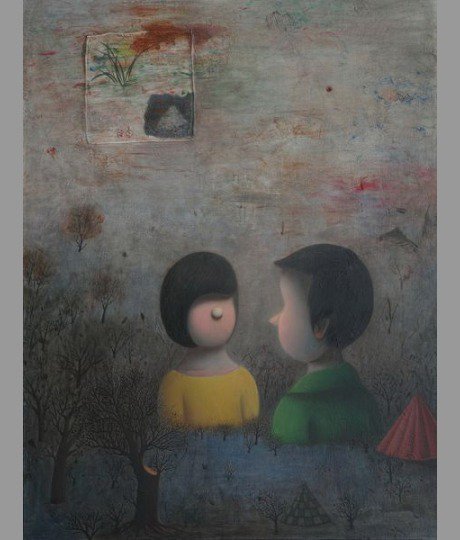(Dis)appear
dal 11/2/2015 al 7/3/2015
Segnalato da
11/2/2015
(Dis)appear
Primae Noctis Art Gallery, Lugano
The exhibition presents three artists very distant in origins and production, but which, in different ways, express the disappearance and the appearance of the human in many different forms.

The presence or disappearance of man and humanity in contemporary art often have a value of sociopolitical critique, reflection on identity, irony or alienation from reality. Today, the human body in art, although excessively and constantly exhibited, is substantially destroyed, diminished, little considered. It is possible to observe a progressive dematerialization of the body, a loss of recognizable appearance, until the expression and assertion of the body in the void of absence.
"(Dis) appear", featuring three artists very distant in origins and production, but which, in different ways, express the disappearance and the appearance of the human in many different forms.
Chen Ke, (Tongjiang, 1978), a young Chinese artist, has a refined production.
For Chen Ke, artistic production is a retrospective approach to life, a reflection that allows her to make the present more secure.
Exhibited five new paintings, intimate and quiet, representing ideal places that catch the inner experience. Delicate and melancholy, the works recall an introspection of the artist himself.
Chen Ke paintings portray a world of fairy tales, dreams, memories of childhood and psychological elaborations. The alienation from reality, as a return to childhood and a more peaceful coexistence with the present, is expressed through a mixed technique that combines different materials on canvas. In this new series of works we see a gradual disappearance of physical features and the characters become unrecognizable figures, while remaining familiar appearances.
In these paintings, nature takes over humans but it is humanized, a living creature, the objects have a soul just like people, there is no history in the making, but only essence in the doldrums of objects. Here the border between reality and psychological elaboration disappears.
In contrast, in Aditya Novali (Solo, 1978) installations, the man disappears completely in favor of the object and the container. Two installations are part of the series "The Wall", the evolution of the project "(Un)real Estate". They represent a miniature of a working-class district's building, composed by rotating apartments, whose user is gone but his presence shines in the remaining objects, by his lack. His absence becomes a status of presence.
For the disappearance of man and the human, the artist tries to give us a solution, a way out, in the artwork "Inhabitants":
"... Imaginary characters that could inhabit the Walls. However, I put the skulls on a pedestal to emphasize the fact that they are artifacts / objects, metaphors and images of present inhabitants ... " (Aditya Novali)
In addition to these strange inhabitants, there is the appearance of nature, sovereign, that takes control, careless and unkempt, of each room ("The Wall series - Living Years") or of the artwork itself ("The Wall series - Landscape "), to testify and claim the appearance of a new contemporary landscape.
The golden sculptures "Ko Shwe" are portraits of Aung Ko himself, in different periods of his life: a naked body, hairless and coated of gold, in a relaxed or aggressive attitude.
The naked body underlines the precariousness and vulnerability of the human condition, while gold refers, on one side to the identity of Burma, often called "golden land" for the gilding of the religious buildings, and on the other side to those Burmese living and working abroad, who call each other "Mister Gold": men with golden dreams, who find themselves in conditions of anxiety, anguish, bitterness.
The gold, however, symbolizes the sacred, invoke a divine transcendence, a needing of overcoming the human condition through a metaphysical experience.
The human figure disappears in the work "The Sights Viewed from Boats", to bring to light how a simple object can become an integral part of the daily life of an individual and a community, entering the collective imaginary as that small scale models are made and used as toys by children.
These canvas boats remind themselves the nature and the landscape through painted decorations.
The use of canvas draws the silent and floating movement of the boats on the river, the contemplation of nature and what river has always been. Stressing, however, in the form, the functional presence of boats on the river, its being way of transport, work, change and unity for a community .
Approaching toy boats to these floating painted canvas boats, is a reference to childhood, to dream:
"These toy boats have everything happen to them: they are raced, go to battle, are pleasure vessels, go fishing, and many other things that the children imagine. So, they are all about hope, action, life and projection of stories. I myself had a boat, but I am sailing with my dreams at present". (Aung Ko)
Image: Dense forest, 2014, mix material on canvas, 100 x 130 cm
Opening: 12 February 2015
Primae Noctis Art Gallery
Via Canonica 7, 6900 Lugano (CH)
Opening time: Mon-Fri / 10.00am - 6.00pm
Saturday by appointment



